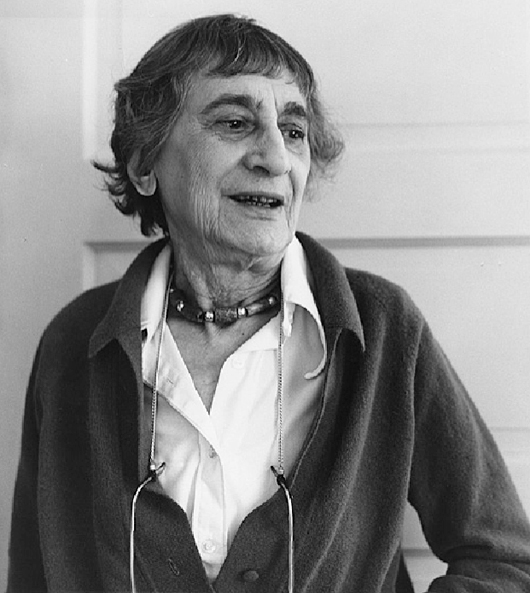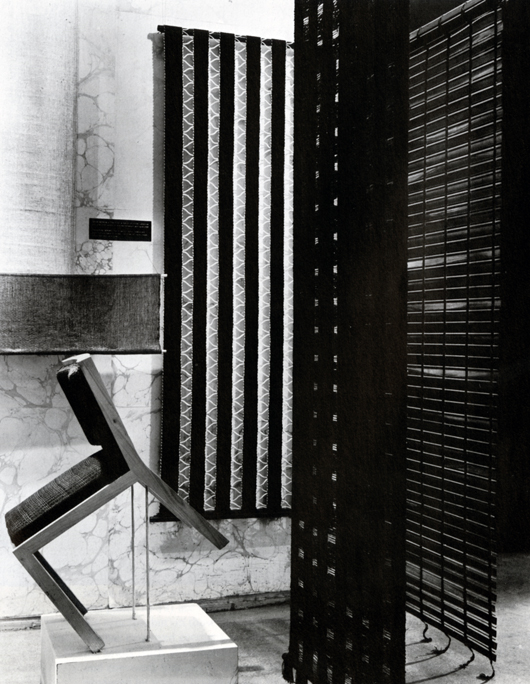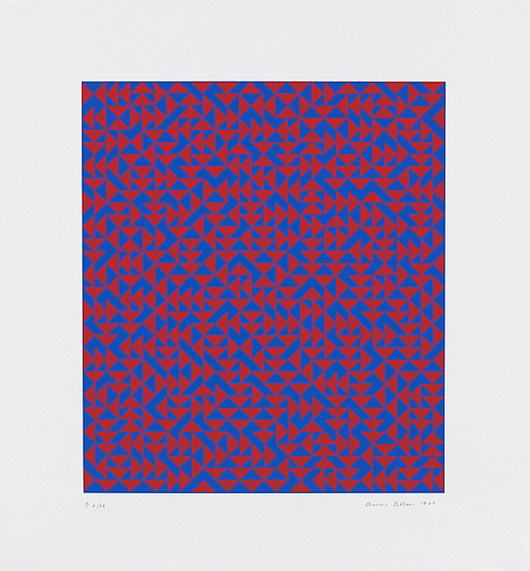Women from History: Cool Albers
By Julia Ritson "I find that a craft gives somebody who is trying to find their way a kind of discipline."
Artist Anni Albers was influenced by Paul Klee, and her wall hangings are like homages to the geometric watercolours of Klee. Klee called textiles "serving objects." Through Klee, Albers came to understand the functional side of textiles and gradually changed her palette from bold colours to more neutral and earth tones that were more likely to succeed commercially.
Anni Albers, photo by Betty Fiske, 1976
Bauhaus trained Albers turned from conventional weaver's materials to cellophane, jute and twisted paper to create unusual wall coverings and hangings including these elegant room dividers.
Installation view showing three free-hanging woven room dividers, from exhibition of Anni Albers' textiles at The Museum of Modern Art, New York, 1949
Anni Albers’ called her wall hangings pictorial weaving. Albers was the queen of the warp and the weft when she landed in the USA. Not only with her woven art but in her commissioned work with industrial textiles. Around 1949 Walter Gropius designed the Harvard Graduate Centre. He asked Albers to produce the bedspreads. They were practical, durable heavy linen and cotton. Albers says Gropius had requested something in an English ‘manly’ style’. He got it.
Bedspread for Harvard Graduate Centre, detail, 1950
After "endless years spent at the loom," Albers began producing prints in 1963. And in 1970, Albers collaborated with Kenneth Tyler at Gemini GEL. Tyler gifted part of his massive collection of prints to The National Gallery of Australia. Robert Hughes organised the whole thing. So we are very fortunate to have in Australia some beautiful works on paper by Anni Albers. There is so much scope with the grid. Albers took the classic device and created these etchings. She used the motif of a triangle within the grid like structure of a woven object. The line carries the meaning. Not the thread of a woven work. There is a cerebral distance in these works.
A coolness.
Second movement IV, 1978
Second movement V, 1978
Second movement II, 1978
Triangles, 1969
"Layer after layer of civilized life seem to have veiled our directness of seeing. We often look for an underlying meanings of things while the thing itself is the meaning."
Julia Ritson is a Melbourne artist. Her paintings investigate colour, abstraction and a long-standing fascination with the grid. Julia has enriched and extended her studio practice with a series of limited edition art scarves. She also produces an online journal dedicated to art and scarves and architecture.







